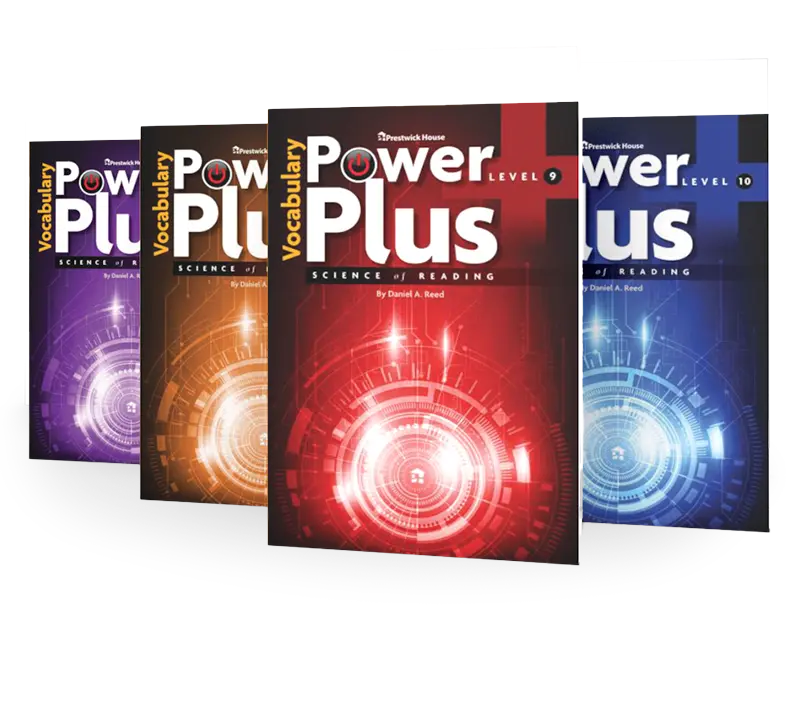Encountering vocabulary words in different contexts can help students better retain them over time. What better way to encourage this type of study than by playing some games?
Short activities are great for giving your students the practice they need to help those words become part of their permanent vocabulary. Here are five engaging vocabulary exercises that are quick enough to use at any time in your classroom.
1. Awesome Adjectival Assessment
This adjectival activity will help your students differentiate between vocabulary words with different shades of meaning and teach them how to select the best word for each purpose.
To begin this exercise, provide your students with a list of a few adjectives. These adjectives can come from your current vocabulary unit or previous ones. Make sure the adjectives you choose have several synonyms.
Then, have students write down two synonyms for each word: one that is more intense, and one that is less intense. For instance, let’s say one of your students’ vocabulary words is irate. They may list angry as a less intense word and apoplectic as a more intense word.
Students may need to use a thesaurus for this exercise, as they might not know enough synonyms for all the vocabulary words. When possible, consider encouraging your students to complete the exercise without the help of a thesaurus.
2. Speedy Short Story Swap
Context-based vocabulary practice and a small writing workshop all at once? Yes, please! In this engaging exercise, give your students five to ten minutes to write a short story using as many vocabulary words from the current unit as they can.
When the time is up, split the class into pairs. Have each pair swap stories and peer review for correct vocabulary word use. If a student finds a word used incorrectly, have them explain to the other student why the word was incorrect. These discussions about correct word usage will encourage students to recall word definitions and think critically about the vocabulary they’re studying.
3. Pyramid
This vocabulary exercise is based on The $100,000 Pyramid, a television game show known for its partner-focused gameplay. In this activity, your students work together in pairs, with one student giving clues and the other responding with the vocabulary word each clue refers to.
To begin, divide your class into pairs of students. Then, explain how the game works:
- Each pair consists of a clue-giver and a guesser. The clue-giver has a list of six vocabulary words and must provide clues to the guesser, who must attempt to identify the correct vocabulary word.
- The clue-giver can’t use the vocabulary word as part of the hint. No gestures, either—this game is played with words only. The clue-giver can tell the guesser if they are on the right track.
- The guesser can ‘pass’ to move on to the next if they get stuck on a word.
- Each pair gets one point for each word the guesser gets correct.
- The time limit is 60 seconds, so work fast!
Playing this game will give both students in the pair practice with vocabulary; the clue-giver will have to come up with different ways to explain the target word (demonstrating knowledge of what it means), while the guesser will have to use knowledge of the word to choose correctly.
This is a very quick activity; you could do this one every day as a warmup if you wanted. If you do play this game, however, make sure you mix up the teams, as students may start using the same clues over and over, diminishing the effectiveness of the activity.
4. Drawing Pictograms
Linguistic and nonlinguistic strategies are both important for learning vocabulary, but we often focus wholly on the linguistic side. Nonlinguistic strategies can help students remember new words, too.
A pictogram is an image or icon that refers to a physical object in order to convey its meaning. For example, a bright red octagon usually means “stop” in most contexts.
When reviewing new vocabulary words, have students draw a simple representation—a pictogram—of each word. In drawing their pictograms, students should strive to convey their ideas as directly as possible. This can be very challenging to do with difficult vocabulary words, so consider providing examples to get your students in the right mindset!
5. Vocabulary Charades
Charades is a pretty easy game to play—one person acts out a word without speaking, and everyone else tries to guess the word.
Charades vocabulary-style is basically the same, but with one change: After the round ends, the performer has to explain the intent behind the performance. How did the chosen movements reflect the vocabulary word and its meaning?
You can play vocabulary charades as an entire class, with student volunteers to take on the role of performer. Students can also break into smaller groups.
Support Consistent Vocabulary Growth All Year Long
Looking for more ways to strengthen your students’ vocabulary skills? A well-structured program can provide the consistency and depth needed to build lasting word knowledge. Vocabulary Power Plus does just that.
This series helps students engage with new words in multiple ways, from sentence completion and inference-based questions to critical reading exercises. Vocabulary Power Plus also includes cumulative reviews and access to free online resources such as flashcards and interactive review games to reinforce learning.

Take a Closer Look
There’s so much more to learn about Vocabulary Power Plus! Free sample pages are available for download at your convenience. Simply fill out the form to access pages for all levels of the program.